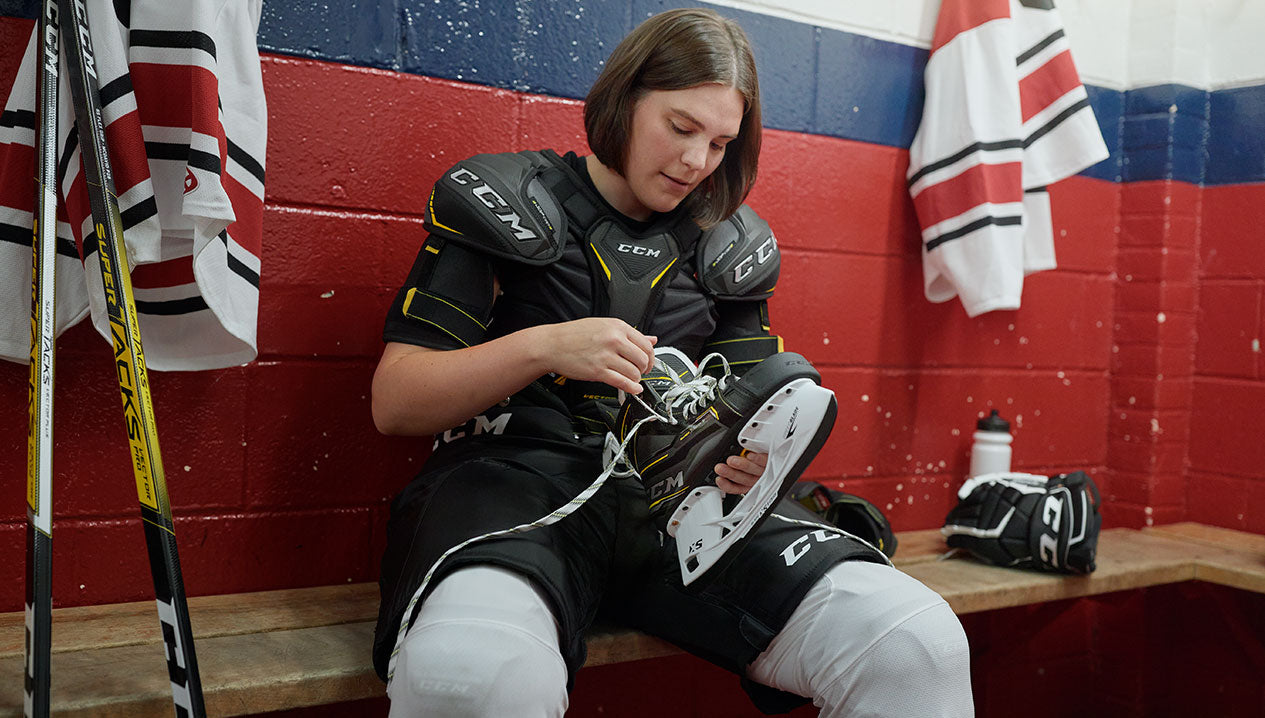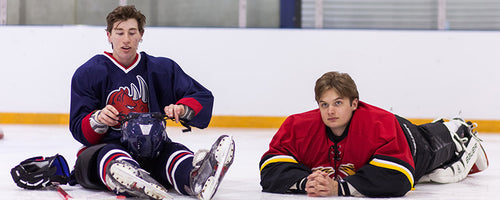How To Prevent Cold Feet in Your Hockey Skates

When you are playing hockey, the last thing on your mind should be cold feet.
We've all been there - your feet are so cold that stepping on the ice is like stepping on a 1000 needles with bees swarming around in your hockey skates. In contrast, once you begin moving, your upper body becomes warm under all the hockey equipment you're wearing as you exert yourself pursuing the puck. However, as your feet continue to dangle down the ice, there's not much to insulate between you skin and some plastic, especially if you're playing outdoor pond hockey.
Cold and uncomfortable feet will distract you and take your focus off the game, but there are things you can do to avoid this problem.
Prevent Cold Feet By Making Sure Your Skates Are Properly Fitted
One of the most effective ways to avoid cold feet is to make sure your skates are properly fitted. Skates should be snug, but not be too tight. There should be a little room at the front of the boot to allow circulation to your toes. When playing hockey, it is common for your feet to temporarily swell a little. A properly fitted skate will compensate for this by expanding slightly; so slightly that you do not even notice it. This will allow for blood circulation to continue without restriction, especially down to the toes.
However, too much room in your skates mean your heel and feet won't be locked in, which will have an adverse effect on your skating; you will lose energy transfer from your foot through the blade, slowing you down and making your turns sloppy.
Sock Strategy 101
It seems intuitive to want to wear a heavy sock or multiple layers of socks if you are trying to keep your feet warm. You may even be tempted to go with a larger skate size to accommodate socks or toe warmer packs.
Bad idea.
Your feet will sweat, a lot, and the moisture will get trapped. This moisture will cool rapidly and make your feet feel frozen quickly. As well, thick sock material will cause friction and rubbing between the skate and your foot, that could result in painful blisters, and your skates will be too big to perform properly.
Technical socks made specifically for hockey are recommended for use in your skates.
Hockey socks are thinner and are designed to be moisture wicking, venting and temperature regulating to keep your feet drier. Less sweat in your boot means your skates are light throughout the whole game so you won't tire as easily. The thin sock will not interfere with the boot fit, so you can use the skate's technology features to maximize your performance, while maintaining consistent blood flow throughout the foot. Hockey socks are available in several price points ranging between $7.99 to $19.99 per pair from manufacturers, including Easton and Bauer, and may be one of the best and most simple investments that can make a difference in your game.
Always put on socks that are completely dry - be sure to grab a fresh pair each time you play instead of leaving the same sweaty pair in your bag that may still be moist from the last game.
TIP: Sprinkle a little baby power in your skates for both dryness and odor control.
Waxed Laces VS Non-Waxed Laces
Believe it or not, your skate laces could be causing your feet to get cold.
The ability of the wax lace to stay tighter longer may be adding to your problem with keeping your feet warm. The laces may be preventing your skate from expanding during play, as previously mentioned, which restricts blood flow and causes cold feet. Non-waxed laces allow more give during play. You may have to tighten your laces during a game, but the benefit will be that your feet will be warmer.
If you struggle tying your skates, try a lace tool that is shaped like a hook. This takes the stress off your hands and allows you to tie your skates tightly so your foot is locked into position.
Many players swear by waxed laces over non-waxed laces. Often players prefer waxed laces for the following reasons:
- Stay tighter longer
- Do not stretch as much as non-waxed laces
- In some cases, wear better than non-waxed
- Do not hurt your fingers as much when tightening
- Are easier to thread through the skate’s lace eyelets
If you're experiencing cold feet while playing hockey, see your Source For Sports hockey professional. They will offer you tips and tricks, and a proper fit to ensure cold feet don't damper your game.
For expert advice on hockey gear and equipment that is right for your game, level of play, and budget, come see us at your local Source for Sports hockey store near you. We Fit Your Game.
Join Source Nation to get the latest news on product launches, Source Exclusive product lines, tips and tricks for parents and players, and more!



